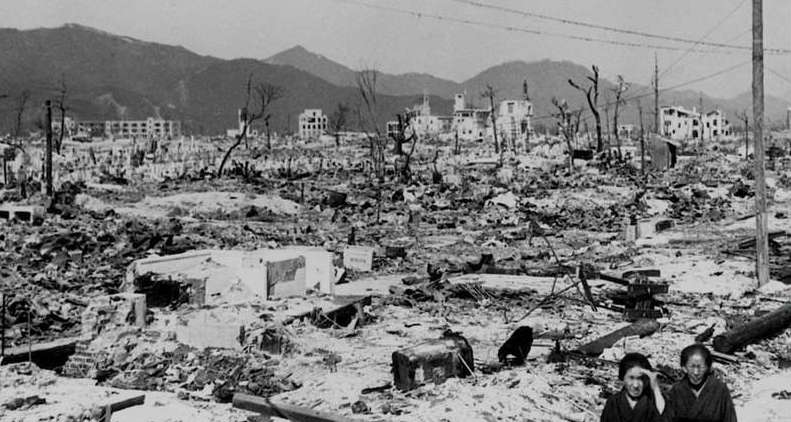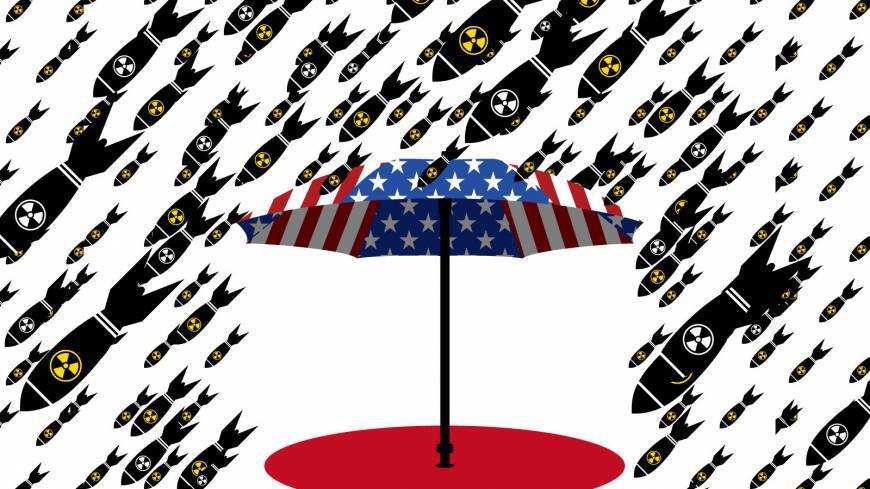
This is what “deterrence” looks like.
Nagasaki Urges Break from Nuclear Deterrence
The Mainichi
NAGASAKI (August 9, 2023) — Nagasaki’s mayor called on nuclear weapons-possessing states and their allies to “show courage” by breaking free from nuclear deterrence principles on Wednesday at a scaled-down ceremony to mark the 78th anniversary of the atomic bomb attack on the city, held amid a typhoon.
The ceremony, which was held inside a vast, modern room at the Nagasaki Dejima Messe conference center, was the first since 1963 to take place indoors rather than at the southwestern Japan city’s Peace Park close to the hypocenter where the bomb detonated.
The local government decided to hold the event among organizers only and cancel in-person attendance, including by Prime Minister Fumio Kishida and international guests. It was the first Nagasaki ceremony not to be attended by a Japanese leader since 1999.
In his Peace Declaration, Mayor Shiro Suzuki joined his counterpart in Hiroshima, Mayor Kazumi Matsui, in using this year’s speech to oppose the principles of nuclear deterrence, reaffirmed at the Hiroshima Group of Seven nations’ summit in May.
Suzuki said nuclear-armed countries and states defended under nuclear umbrellas should “show courage and make the decision to break free from dependence on nuclear deterrence.”
The mythical promise of a “nuclear umbrella.”
Takeko Kudo, 85, who delivered the annual commitment to peace, was one of the only atomic bomb survivors at the ceremony.
“What survivors want is disarmament and a peaceful world, and that was the most important thing for me in coming today,” she said after the ceremony.
The nuclear attack on Nagasaki on Aug. 9, 1945, came three days after an atomic bomb was dropped on Hiroshima, western Japan. It is believed to have killed around 74,000 people in Nagasaki by the end of the year and left many others suffering its effects for the rest of their lives.
A moment of silence was held at 11:02 a.m., when the plutonium bomb, codenamed “Fat Man,” was dropped by a U.S. bomber and exploded over the port city. It remains the last place attacked with a nuclear weapon.
The mayors’ statements against the doctrine of nuclear deterrence followed the G-7 summit in Hiroshima, where world leaders met an atomic bomb survivor, visited a museum dedicated to the effects of the bombing and released their first-ever document on nuclear disarmament, known as the Hiroshima Vision.
It states that as long as nuclear weapons exist, they should “serve defensive purposes, deter aggression and prevent war and coercion.”

But Suzuki referenced heightened nuclear tensions amid threats made over the war in Ukraine, saying Russia is “not the only state representing the risk of nuclear deterrence.”
He called on the Japanese government to “show resolve” toward eliminating nuclear weapons by signing and ratifying the Treaty on the Prohibition of Nuclear Weapons as quickly as possible.
UN Secretary General Antonio Guterres, too, said nuclear weapons are “being used as tools of coercion,” in his statement read aloud at the ceremony.
“The risk of nuclear catastrophe is now at its highest level since the Cold War,” he said.
In contrast to the mayors’ calls, Kishida offset by backing nonproliferation in his pre-recorded video address to the ceremony.
“Japan, holding the presidency of the G-7 and nonpermanent membership in the United Nations Security Council, will lead global efforts towards realizing such a world, while calling for the international community to unite in maintaining and strengthening the Treaty on the Non-Proliferation of Nuclear Weapons,” he said.
He also said that as the only country to have suffered a nuclear attack, Japan will uphold its three non-nuclear principles of not possessing, producing or permitting the introduction of nuclear weapons as part of the nation’s “forever unchanging” mission to achieve disarmament.
Under the U.S. nuclear umbrella’s protection, Japan has not joined the treaty on prohibiting nuclear weapons and instead continues to back the NPT.
It includes nations possessing nuclear weapons, such as the United States and Russia, among its 191 state parties and is intended to stop the spread of the weapons and achieve disarmament.
Conversely, the 2021 ban treaty prohibits nuclear weapons totally. None of the nuclear-armed states are among the 92 countries to have signed it.
The decision on Sunday to change the venue came amid concern over the path of Typhoon Khanun. The event has never been canceled since the city government began holding it in 1956, with the 1963 ceremony being the only occasion it was moved indoors due to rain.
Around 40 people, primarily from the city government, were present, in a drastic reversal for an event that was projected to welcome national representatives from a record 85 countries and regions and some 2,400 attendees.
Arrangements in the center’s conference hall, located around 3 kilometers from the Peace Park, sought to evoke parts of a typical ceremony, with a nearly floor-to-ceiling high projection of the Peace Statue under a summer sky, and streams of folded paper cranes symbolizing peace hung on banks of clothing racks.
The Nagasaki Peace Park marks the 75th year since the bomb fell.
And while a recording of a bell played in the conference center to mark the moment the bomb exploded, around 10 members of local survivors’ group Nagasaki Prefecture Hibakusha Association, plus another 40 participants, came to the peace park to ring the peace bell at 11:02 a.m. and three more times afterward.
“I was worried not doing it would stop feelings toward disarmament, so we had no choice but to come out and ring the bell,” said Shinichiro Hayashida, a 67-year-old second-generation survivor and the group’s executive director.
Some survivors also made early-morning journeys to the empty and intermittently rainy park to pay their respects, including Yuriko Honda, 86. She brought a chain of 504 paper cranes she had folded to offer to those who lost their lives to the attack.
“I prayed for the dead to rest peacefully and for them to watch over me,” she said after offering the cranes.
The typhoon has brought widespread disruption to Nagasaki and cancellation of other peace-related events, including forcing the early closure from 3 p.m. of its atomic bomb museum. Some shinkansen bullet trains in and out of the city were suspended from around 9 a.m.
The city of Nagasaki itself confirmed the deaths of 3,314 atomic bomb survivors in the year through July, bringing the total number of names on its list of officially recognized atomic bomb victims to 195,607 people.
Nationally, government figures current to the end of March showed there were 113,649 officially recognized survivors of the Hiroshima and Nagasaki attacks, down 5,346 from the previous year, with their average age standing at over 85.
ACTION: EAW encourages you to take action toward ensuring that nuclear weapons are never used again by urging your members of Congress to support H. Res. 77, which calls on the United States to embrace the goals and provisions of the Treaty on the Prohibition of Nuclear Weapons (TPNW) and to adopt Back from the Brink’s comprehensive policy prescriptions for preventing nuclear war.
Posted in accordance with Title 17, Section 107, US Code, for noncommercial, educational purposes.

